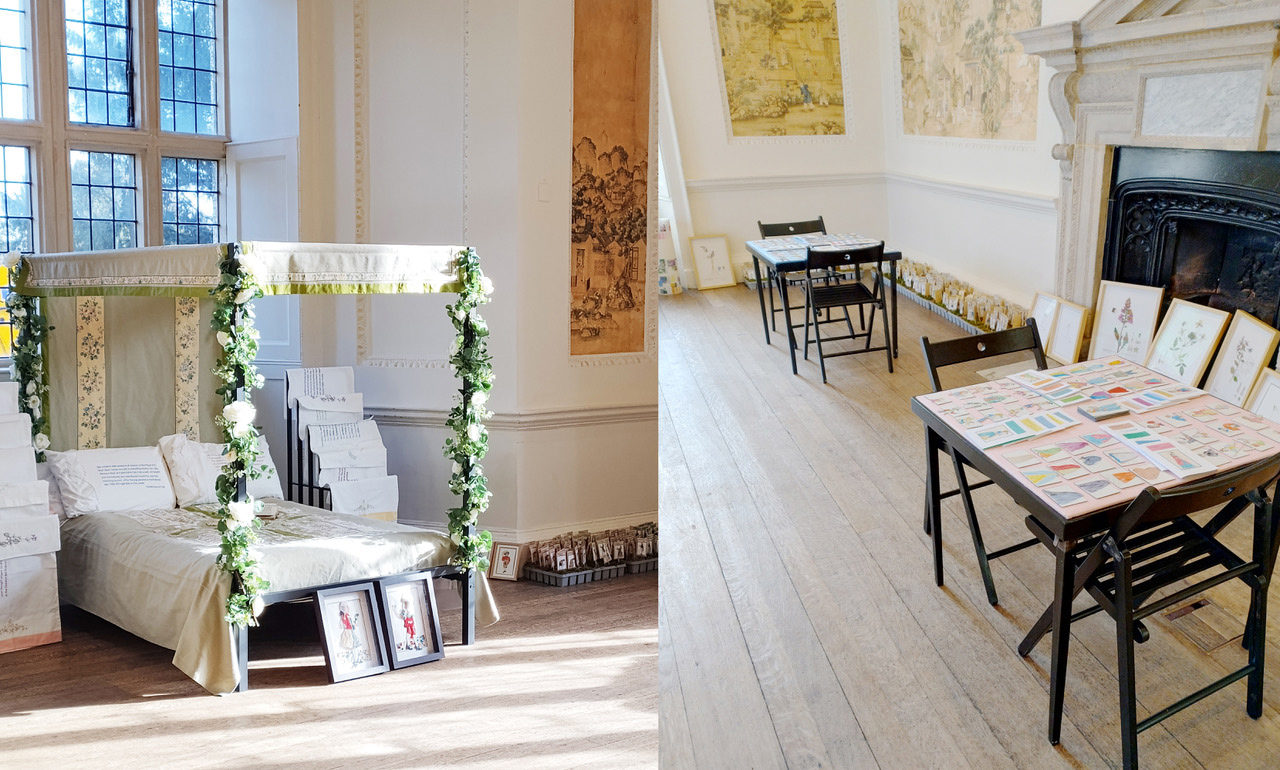PhD Research
Private Archives: How did Linnaean Botanic Taxonomy and Metaphor Influence and Reinforce Sexual Hierarchy in Eighteenth Century England? (working title)
In 1729 Carl Linnaeus (1707-1778) published a university dissertation which affirmed that plant fertilisation occurs when pollen from the male stamen lands on the stigma of the female flower. He then used the number of the stamen in a flower to organise plants into different species, prioritising them over the stigma. In describing his novel method of plant taxonomy, he used the metaphor of the marriage bed and aligned plant reproduction with human sex.
Contemporaneously in England, elite women were largely confined to domestic and social spaces. They were excluded from university, and from almost all professional and academic organisations. They were brought up within a patriarchal hierarchy whereby a father could select his daughter’s husband, and when she married, a woman forfeited her wealth and property to her spouse and from thenceforth was accountable to him.
When Linnaeus introduced his new system of plant taxonomy, he not only reinforced social culture in his prioritisation of the male over the female, but he used a metaphor which was deemed by many as disgusting, immoral and unsuitable for female consumption.
Taking these ideas as starting points, this research project employs collage as a broad and exploratory methodology. Through installations that reference the woman’s private dressing room and the gentleman’s closet, I examine how each gender historically approached the study of botany. The project considers how elite women, largely confined to the domestic sphere, refined their botanical pastimes as a means to negotiate, critique, or subvert the prevailing view that Linnaean botany was unfeminine and inappropriate for their gender. In contrast, men advanced their studies through formal academic routes, with access to universities and scientific societies.
The installations feature caricatures of forty-eight historical men and women, each assigned a specific professional or social class. Through these classifications, I explore how individuals enacted gendered roles within elite English society, and how the diverse 'marriages' found in Linnaean botanical taxonomy were mirrored in the relationships and social interactions of these figures.
Installation Text and Images: Shaw House, Newbury. February 2025

This exhibition consists of a number of artworks shown at Shaw House, Newbury in February 2025. Shaw House was originally built by the Thomas Dolman who had made his fortune in the cloth industry and was anxious to establish his status as one of the landed gentry. My particular interest in the house however, results from its eighteenth century occupants, the 1st Duke and Duchess of Chandos who extended and refurbished the property including what is now known as the Chandos Room with its beautiful reproduction eighteenth-century Chinese wallpaper.
Cassandra Brydges, Duchess of Chandos (1670-1735) was selected to represent the class The Wife, not only because of the role she fulfilled as the second of Brydges’ three wives, but for her connection to the vegetable kingdom through her guardian, the botanist John Ray (1627-1705).As a wife and mistress of an elite and extensive household, Cassandra was part of the last generation of women whose responsibilities lay in ensuring the gardens produced sufficient food to feed the family and who had a knowledge of ‘simples’ and their use in the preparation of medicaments; tasks that became reframed and elevated to the professional occupations of horticulturist, apothecary and botanist over the course of the century.
Text and Images: The Glass Tank, Oxford Brookes University. April 2025

This exhibition consists of three installations Ordering the World 1, Ordering the World 2, and Marriage Bonds. Both Ordering the World 1 and Ordering the World 2 present rigorous physical approaches to presenting data collected in a digital database and interogate the virtual archive through distinct yet interconnected modes of representation. The first adopts a recognisable form of visual order, the second, privileges ambiguity, suggesting that archives are lived and complex; each invites the viewer to encounter history not as a linear or hierarchical progression, but as spatial and relational experiences. Ultimately, both works demonstrate how archives are never neutral containers of truth, but evolving constructs shaped by what is remembered, omitted, connected, displayed and ultimately,valued. Marriage Bonds
With universities sites having historically functioned as sites where gender-based exclusions were both enacted and legitimised, botanic knowledge was not merely taught but institutionally validated through the establishment of university botanical gardens, herbaria, and natural history collections. Furthermore, academic institutions played a central role in determining which classification systems gained legitimacy and which were dismissed as amateur or insufficiently rigorous.